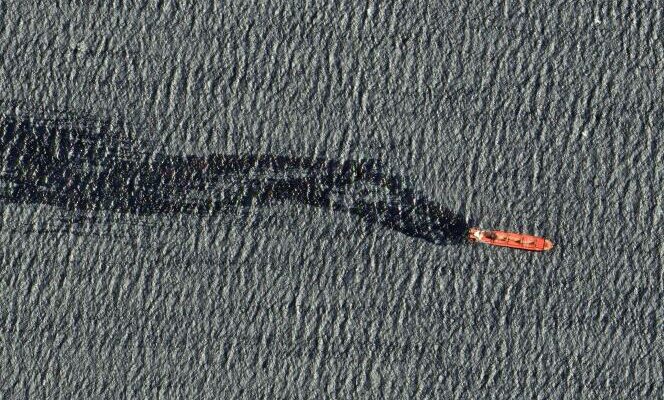Concern has been growing in the Red Sea since the sinking on Saturday March 2 of a ship loaded with chemical fertilizers off the port of Mokha, in Yemen. United Arab Emirates Party, the Rubymar was on its way to the Suez Canal and Bulgaria when it was hit in the engine room by Yemeni rebel missiles on February 18. The bulk carrier, owned by the British company Golden Adventure Shipping, flew the Belize flag and was operated by the Lebanese company GMZ Ship Management, which is registered in the Marshall Islands. Immediately afterwards, the closest countries, Yemen, Saudi Arabia and Djibouti, reportedly refused to welcome the ship into their ports for fear of an ecological disaster.
It anchored 65 kilometers from the shore, ended up sinking after evacuating its crew, and is now lying on its side, at a depth of a few dozen meters. It was carrying 200 tonnes of propulsion fuel and 80 tonnes of diesel in its holds, as well as 22,000 tonnes of phosphate and ammonium sulfate.
On Wednesday March 6, the European Commission set up an international team under the aegis of the European Union Emergency Response Coordination Center. In conjunction with the UN, which sent five specialists from the United Nations environment program, this European team aims to provide remote expertise to the Yemeni authorities.
“For the moment, no major pollution has been observed around the ship. The boats present in the area have just spotted an oily product on the surface of the sea which could correspond to lubricants escaped from the engine room”indicates Christophe Logette, director of the Center for documentation, research and experiments on accidental water pollution (Cedre) in Brest, one of the bodies mobilized by Brussels.
No apparent breach in the hull
It is not the quantity of hydrocarbons involved, spread over around forty kilometers, that is of greatest concern: the tonnage of fuel oil is a thousand times less than that ofAmoco Cadiz, the tanker responsible for the oil spill which hit the north-west of Brittany in 1978. “The threat is not pharaonic, even if the fuel oil could pollute the coasts of Yemen and in particular those of the Hanish, an archipelago of around twenty islands with remarkable biodiversity”believes Mr. Logette.
Fertilizers, on the other hand, raise more questions. They certainly have the advantage of being in solid form, beige-colored granules which have not yet spread into the sea, the hull of the Rubymar apparently not presenting no breach. Used in agriculture for their supply of nitrogen and sulfur, but also in the pharmaceutical, textile and chemical industries, particularly in fire extinguisher powders, the products present are not explosive and their dissolution is slow.
You have 56.08% of this article left to read. The rest is reserved for subscribers.
